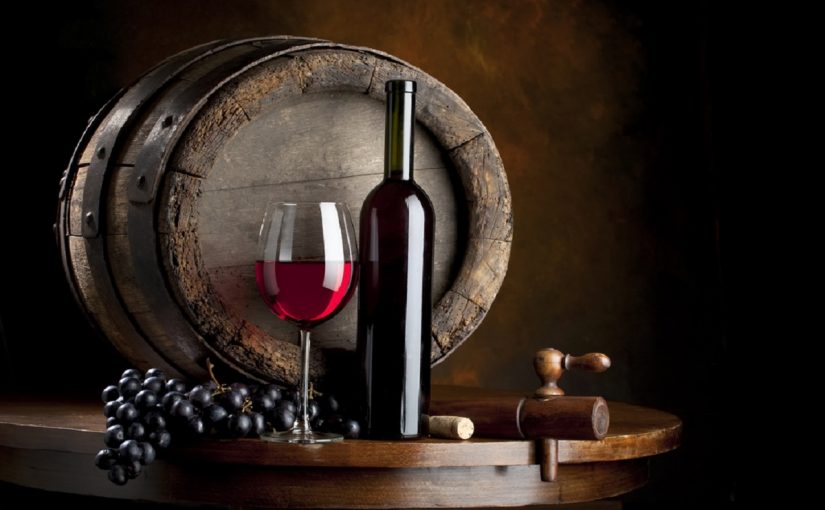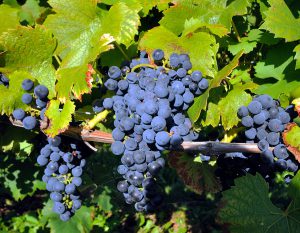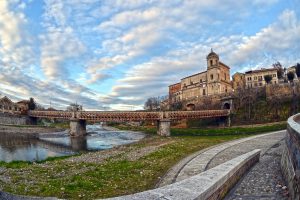26.1.2018
Calabria has 12 DOC regions and they include:
- Ciro’
- Donnici
- Isola di Capo Rizzuto
- Lamezia Terme
- Pollino
- San Vito di Luzzi
- Savuto
- Scavigna
- Verbicaro
- Bianco
- Bivongi
- Melissa
However, even if Calabria got a real rich selection of magnificent wines, they are all less known, comparing them to Ciro’.
Like most wines produced throughout the world, Ciro is meant to be consumed 3-4 years after production, but a certain amount of Ciro Rosso can be aged 10+ years. This explain, partially, its international success.
Further, in the province of Reggio Calabria there are many IGT zones including Arghillà, Costa Viola, Locride, Palizzi, Pellaro, and Scilla, and clearly these local wines are mainly for daily consume. They are associated with a tasty regional cuisine, for example the wines of Costa Viola region, along the western Calabria seacoast, and are related to Swordfish and goat dishes.
Only Ciro’ can be associated to all Mediterranean cuisine and this contributes to explain why is the best known Mediterranean and Calabrian wine, in Italy and in the world.
There are three standard types produced including a rosso (or red) made from the Gaglioppo grape, rosato (rose), and bianco (white) made from the Greco grape. Some rosso wines also contain a mixture of Greco and Trebbiano white grapes, but it must be less than 5 percent to meet DOC standards.
THE LAND OF THE WINE
Calabria is bordered to the north by the region of Basilicata. The rest of Calabria is bordered by the Ionian and Tyrrhenian Seas. Even if it is one of the poorest regions in Italy, its economy stands out for its wonderful agriculture, including grapes, figs, olives and citrus fruits.
The Ionian Sea has a moderating effect on the temperatures for the vineyards nearer to the coast, and the area is still quite hot and dry during the day.

Due to these excellent conditions of altitude, temperatures cool down a little at night, which allows the grapes to continue to develop thru the growing season. The soils are a mix of clay, sand and marl, which is good for wine growing.
The proximity of Mediterranean Sea is decisive for the terroir, as the mass of water helps to moderate the intense heat of the south Italian summer. The cooling and heating of the land, over the course of a summer day, causes morning and afternoon breezes, which minimize the risk of fungal vine diseases and further improve the climate’s suitability for quality viticulture.
Another key factor is that the vines grow very well, because, in terms of the topography, there are some flat long areas near the coast (less than 10% of the total country), even if most of Calabria is mountainous.
This way, the Cirò wine region is located in very flat areas in the eastern foothills of the La Sila region and extends to the Ionian coast. However, the heart of the region classical Ciro’ is centered on the municipalities of Cirò and Cirò Marina in the province of Crotone.
The soil of this area is predominantly calcareous marl with some clay and sand deposits. Further this ancient Calabrian wine region is a really sunbaked part of Italy and offers a gorgeous countryside of ancient olive trees and undulating vineyards planted with a unique red grape—Gaglioppo.
CIRO’ AND ITS GRAPE
The Gaglioppo grape is usually the main component of Cirò, giving it soft red fruit, allspice and cinnamon flavors, notes of walnuts, and a bright, acidic structure that matches up nicely with spicy meats, stuffed peppers, and pizza, lamb, and even fish like swordfish and sardine.
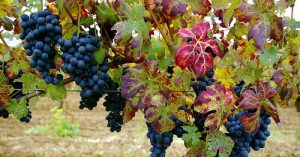
The Gaglioppo grape is indigenous to the area. The wines it produces are unique. The grape’s pulp is lightly colored. While the skin of the grape is thick, it does not have many tannins. To produce quality wines, producers must be willing let the grapes get fully ripe and then allow the juice to have contact with the skins for a long time to absorb both color and the tannins for structure. To do this well wine making requires temperature controlled modern equipment which can be expensive.
Another very similar DOC zone in Calabria is Melissa (about a 30 minutes’ drive south of Ciro’). The region of Melissa uses Gaglioppo grapes and produces Ciro’-like wines (mostly from Gaglioppo and Greco Nero), but does not have the same reputation (at least outside of Calabria) as Ciro’.
Instead, the region of Ciro’ is situated on the eastern tip of Calabria, about a 4 hour trip north from Reggio Calabria. Here, the area, the vineyards and the grapes of Ciro’ are designated as DOC wine or “Denominazione di Origine Controllata” [DOC is basically a label meaning that any particular wine from an officially recognized region of Italy must be produced in specific well-defined regions, according to specific rules designed to preserve the traditional wine-making practices of the individual regions].
Given that Ciro’ wine is made in the eastern foothills of the La Sila plateau and out to the Ionian coast, in the Ciro, Ciro Marina, Crucoli and Melissa communes, – then the highest-quality grapes come from vineyards employing the alberello basso vine cultivation method, meaning grapes are harvested by hand due to their bushy shape.
For economic reasons many modern vineyards have abandoned this traditional process, turning instead to the espalier trellised vine cultivation system. While espalier-trained vines are easier to harvest, the quality of their fruit is considered inferior to those grown on the alberello bush vines.
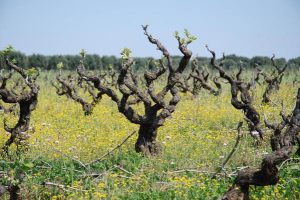
The wines of the region are predominantly red containing at least 95% of the Gaglioppo grape and up to 5% of the white Greco bianco and Trebbiano grapes permitted. Rosés and white wines from at least 90% Greco bianco and up to 10% Trebbiano are also made in Cirò but in very limited quantities.
The designation of Cirò classico will only appear on red wines. Red Cirò is typically very tannic and full bodied with strong fruit presences. It is recommended to consume it 3–4 years after vintage but it can take more time to soften the tannins.
LEGEND AND HISTORY
It is said that Cirò was offered to winners of the ancient Olympics. Local legend tells that the grapes were used to produce Cremissa, in a Greek colony known today as Cirò Marina, a beverage offered as a toast to the gods by the Olympic champions of ancient Greece. Also for this reason in the 1968 Olympics, the athletes were all offered Cirò with their meals during the competition.
Indeed, the Greeks came to the area bringing the art of winemaking. They called the area Enotria that meant “land of the wine”. There are records from the 4th century B.C., which indicate a vineyard in this area was worth six times the value of the same size field planted with grains.
Therefore, Cirò has ancient roots. Cirò may be the oldest wine in the world still produced today!
FEATURES
There are about a dozen producers of Cirò bottling about 30,000 hectoliters per year. Cirò is made also a Bianco (White), and Rosato (Rosè), but it is the Rosso that is most famous.
The Rosso must be made with at least 95% of the wine coming from Gaglioppo grapes. The remaining 5% can be Trebbiano Tuscano or Greco Bianco grapes. There are five additional designations for Cirò Rosso; Classico, Superiore, Classico Superiore, Riserva, and Classico Riserva. The first three are geographical restrictions while to carry Riserva title on the label the wines must be aged for 24 months before release.
It may be surprising to learn that a deep red wine from the south of Italy can be made with a portion of white grapes, but this is not as unusual as it might seem; the robust reds of the northern Rhone valley (Cote Rotie, for example) are often made more supple and alluring with the addition of Viognier, sometimes as much as 20%.
The Ciro Rosso Riserva wines represent the finest that Ciro, and indeed Calabria, can produce. These are matured for at least two years before commercial release, of which six months must have been spent in oak barrels. Those bearing the term classico are from grapes grown at the very heart of the catchment area, and are theoretically superior.
The wines are universally tannic and full-bodied with good structure and a high alcohol content of up to 14%. They are generally intended for consumption within five years after vintage, but it can take up to ten years to soften out the tannic structure in the more robust examples.
About the general tasting notes, these wines are full-bodied, containing aromas of red fruits and spice complement undertones of cranberries, wild berries, and plums. On the palate, the ripe tannins make for an incredibly rich, yet easygoing red wine.
About Food Pairing: The wine can pair with sausage, spicy curry sauces, hot soppressata, and tandoori chicken.

SMAF LTD
Explore our products, coming from CALABRIA. Order the food and beverage products that allow you to explore the Mediterranean diet of a remarkable region. Surrounded by two seas and adorned with pine forests, mysterious villages, natural habitats, and rich biodiversity. Discover handcrafted delicacies that embody the soul of the land: sun-ripened fruits, premium olive oils, bold wines, artisanal cheeses, and traditional cured meats, all crafted with passion and authenticity.

